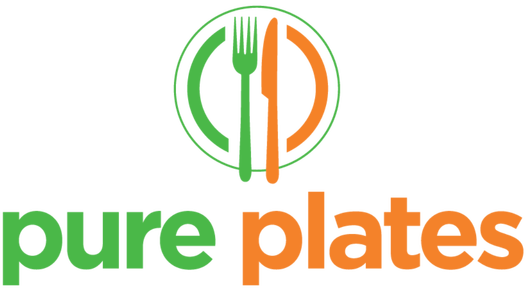How to lower your blood pressure using food
Blood pressure is a condition you’ve probably heard of, but what you may not know is how to reduce blood pressure when its high using food, and how food plays a role in blood pressure regulation. We’ll talk all about this today, but first, let’s dive into what blood pressure means.
What is blood pressure
Blood pressure is the pressure of blood pushing against walls of our arteries. What are arteries? These carry blood from our heart other parts of our body, whereas veins carry blood towards the heart. Blood pressure does not stay the same, rather, it goes up and down throughout the day.
Blood pressure is measured by two numbers. The first number, or the one that your provider tells you first, is your systolic blood pressure. This is the pressure of your arteries when your heart beats. Diastolic pressure, or the second number, is the pressure in our arteries when our heart rests between beats. “Normal” blood pressure is less than 120 / 80 mmg Hg.
Why does blood pressure matter?
When blood pressure gets too high, it’s called hypertension. The higher our blood pressure is, the more risk we’re at for other health problems, such as heart attacks, strokes, or heart disease. There are no specific signs or symptoms of high blood pressure, so get your levels checked.
What causes high blood pressure
High blood pressure can result from a variety of factors. One of the main ones is unhealthy lifestyle choices, including unhealthy eating habits and inadequate physical activity. Other conditions such as diabetes or obesity may also increase risk of high blood pressure.
How to prevent or manage high blood pressure through diet
As we’ve mentioned, your eating habits can play a major role in your risk of high blood pressure. Choosing healthy meal and snack options helps to manage blood pressure. This includes fruits, vegetables, and whole grains. Your plate should be at least half vegetables at most meals. We incorporate these components into our meals at Pure Plates by incorporating vegetables into our delicious meals. Right now, we’re loving this Spinach Artichoke Stuffed Chicken which includes green beans. Any type of vegetables can be included as your veggie portion of each meal. Same goes for fruits! We provide fruit in unique ways at Pure Plates like in our Greek Yogurt bowl. Fruits and vegetables are crucial to incorporate as they are packed with vitamins and minerals. They’re also lower calorie so a larger quantity can be consumed.
For whole grains, try oats, brown rice, whole wheat bread, or quinoa. Whole grains are packed with B vitamins, as well as fiber, which helps to reduce risk of heart disease. About one fourth of your plate should be whole grains at most meals. Lastly, lean proteins are important to include at every meal. Lean meat proteins include chicken, fish, or turkey. Protein helps to keep us full longer and can help with weight management. Being a healthy weight is another component of following a heart healthy diet.
Plant-based eating can also help to decrease or manage blood pressure. Plant-based eating means focusing more on vegetables and legumes over meats. Don’t worry though, we’re not saying to completely avoid meats! Including more vegetables and plant-based items in your routine has been showed to be cardioprotective or manage blood pressure. Here at Pure Plates, we offer plenty of plant-based dishes.

Monitor your salt intake
Sodium or salt intake may increase blood pressure. Although salt intake should not be completely avoided, as salt does so much for our body, most Americans consume an excess amount of salt each day. A lot of this excess salt intake comes from eating out, processed foods, and frozen meals. When cooking your own meals, try cooking without salt until you try the food. Food also does come naturally with salt in it, which should be noted. Pure Plates monitors all of its nutritionals and uses the freshest ingredients so you don’t have to stress about how to eat healthy.
Be physically active
Physical activity is another way to manage blood pressure. The Physical Activity Guidelines for Americans recommends that adults get at least 2 hours and 30 min of exercise each week. This exercise should increase your heart rate.
Maintain a healthy weight
Being overweight or obese increases your risk of high blood pressure. Therefore, it’s recommended to maintain a healthy weight. Eating healthy with Pure Plates, regularly exercising, and not smoking can all play a role in weight management.
Overall, consuming a balanced, nourishing diet with Pure Plates can help you to manage or reduce blood pressure. When choosing foods, select ones that are fresh and whole, rather than packaged and processed. Pure Plates provides you with the freshest of ingredients straight to your door so that you can feel confident and in control of your food choices, at all times.

